DataMiner Digital Transformation Suite
Business leaders, chief finance officers, security leaders, content procurement teams, operations, engineering, administration … only very few of them are not involved in digital transformation initiatives in one way or another. While the global pandemic has accelerated the speed of transformation, the fundamental need for transformation has been lingering for a long time. Enterprises always need to prepare for growth and scaling. They need to obtain the agility to offer new products and services rapidly, change workspaces and habits, leverage new technology platforms, and always deliver an excellent customer experience.
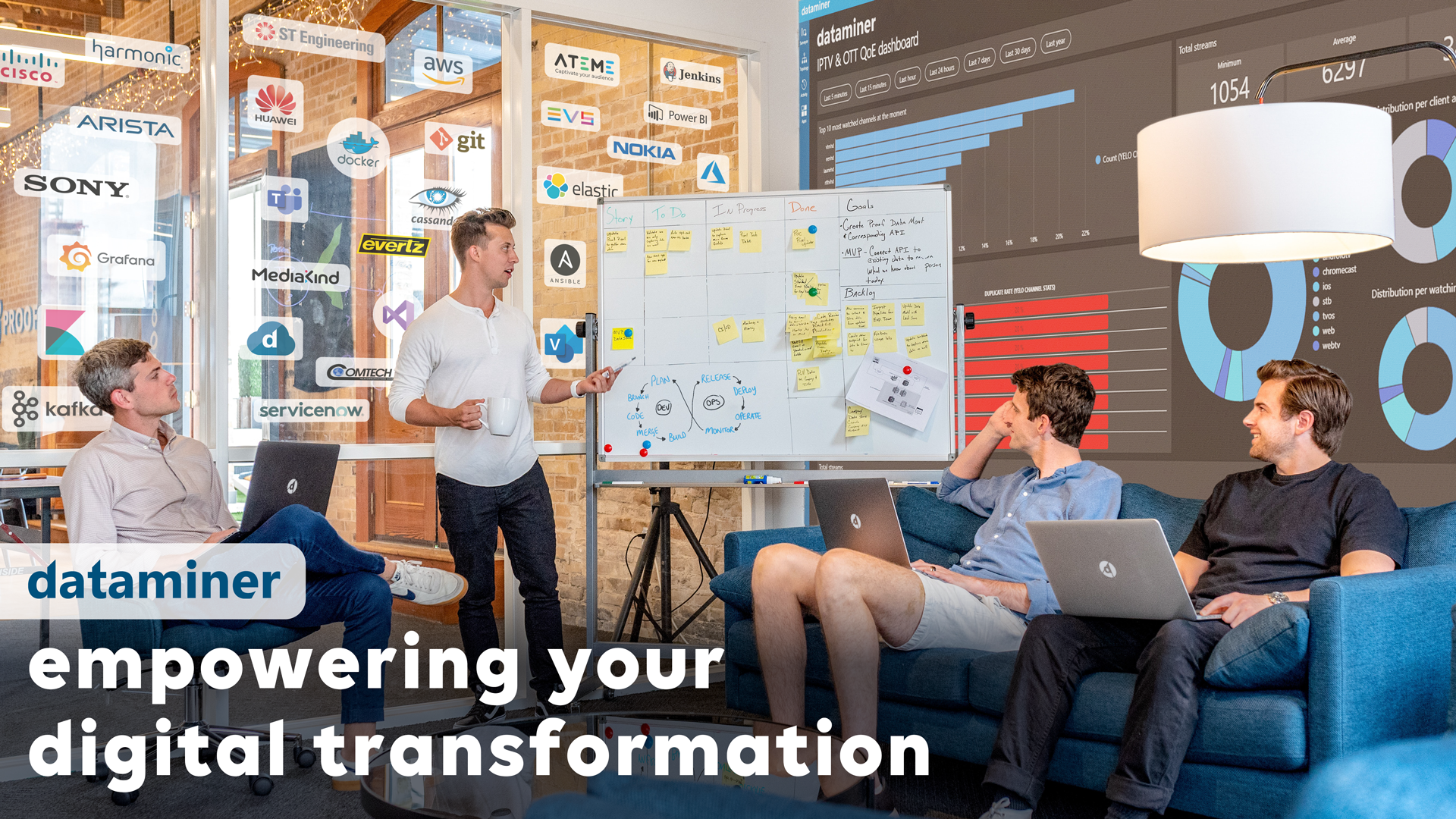
Times are changing. Everything happens more quickly and unpredictably, and uncertainty is ubiquitous. Whereas business needs have been the driver behind cloud networks globally, the new PaaS and SaaS platforms in turn have lowered the barrier for new businesses. Established enterprises re-invent themselves, while newcomers are popping up fast and on a global scale.
Digital transformation is the answer for any enterprise to navigate the new world successfully. It is a journey with undefined start and stop dates. The common goal is to achieve the most impactful evolutions rapidly. Learn fast and adjust fast. The Agile way of working is not a choice, it’s a must. Digital transformation touches all aspects of each organization: people, processes and technology platforms must transform in harmony. Choosing the platform that powers your digital transformation is therefore a very strategic choice.
The DataMiner Digital Transformation Suite is your best stepping stone to digitizing processes across the media and broadband supply chain. The platform is highly configurable and scalable, and it meets the needs of the most demanding process automation and data exchange activities. Not only is the modeling of processes based on the industry-standard Business Process Model and Notation (BPMN by www.omg.org), the openness of the DataMiner platform comes to full fruition from its flexible data object modeling, integrated service and resource management, best-in-class data acquisition and control layer, collaboration services, AI-powered augmented operation, DataMiner Cloud Platform, and much more.
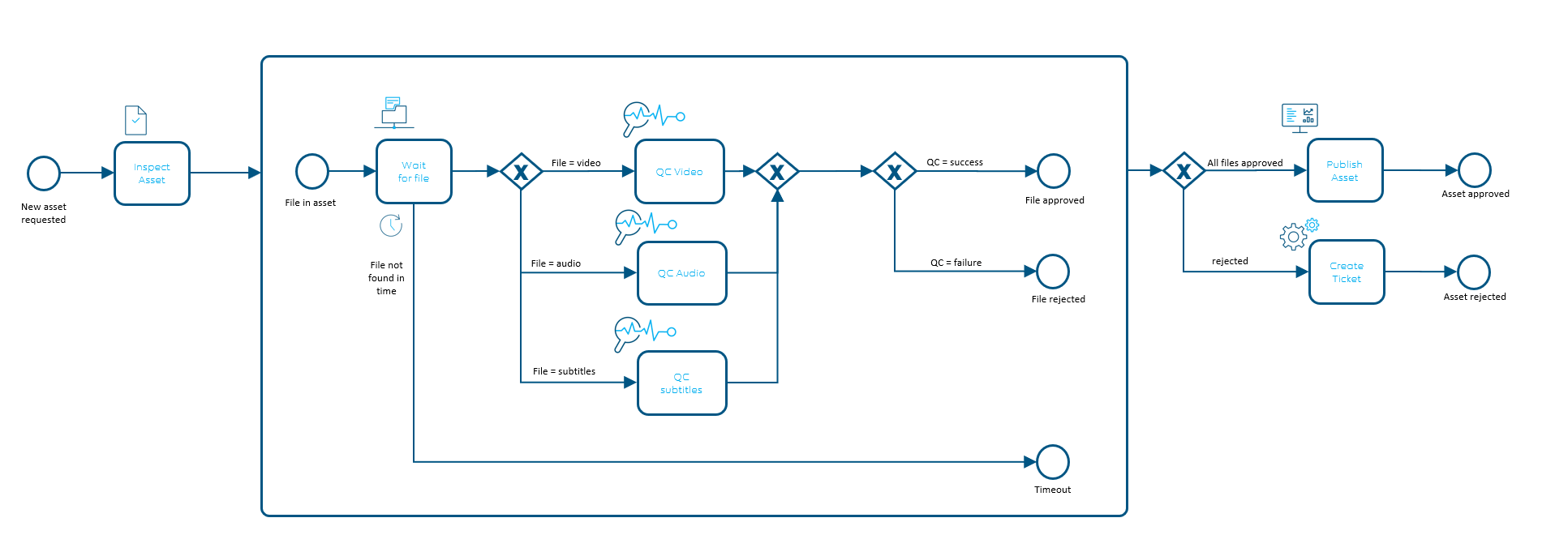
Manage your data and automate your processes
Process automation is the result of processing data on the one hand, and execution of activities on the other hand.
DataMiner Object Models
DataMiner Object Models (DOM) is a brand-new DataMiner module tailored to manage vast amounts of administrative data such as customer data (CRM), occasional-use (OU) jobs and schedules, contractual information, rate cards, TV channel databases, etc. The high-performing data models are part of the DataMiner unified data lake.
- Optimized for large-scale and high-performing administrative data processing and storage.
- Adds state-awareness to data records, enabling creation of stateful processes and applications.
- Supports many data types.
- Intelligently processes mandatory and optional fields (state-aware).
- Has read/write access control (state-aware).
- Comes with an out-of-the-box interactive HTML UI to CRUD DOM instances.
- DOM definitions are easy to create (low code).
- Data can conveniently be exchanged and shared with third-party data lakes.
In short, DataMiner Object Models complement the DataMiner parameters and tables. Parameters and tables contain operational data (with alarm monitoring and trending), whereas DOM objects manage administrative, stateful data.
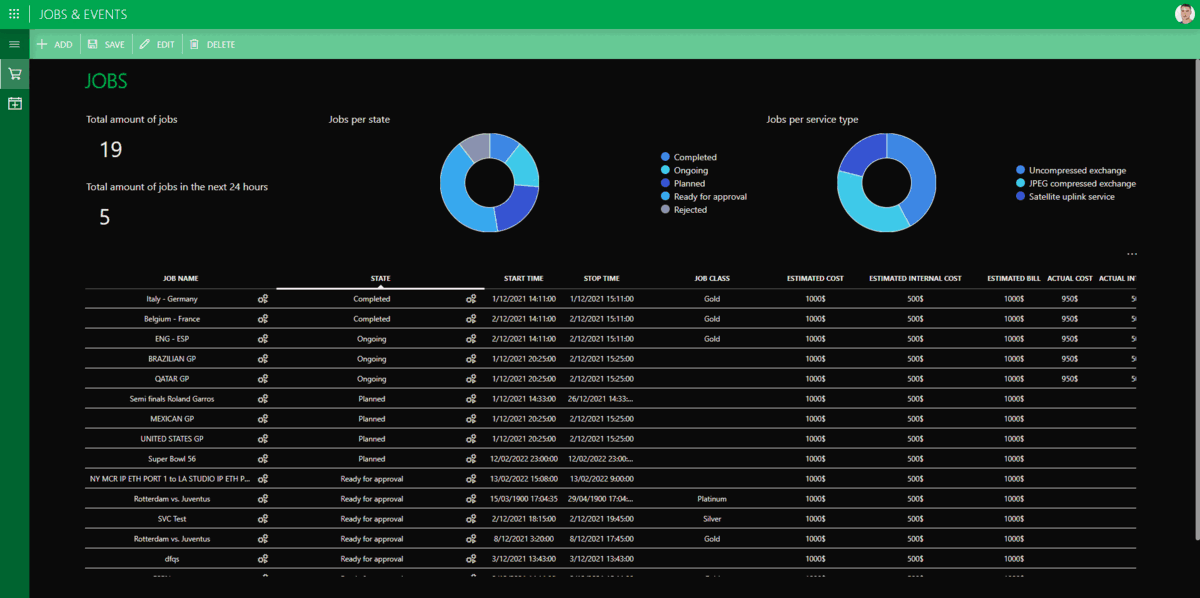
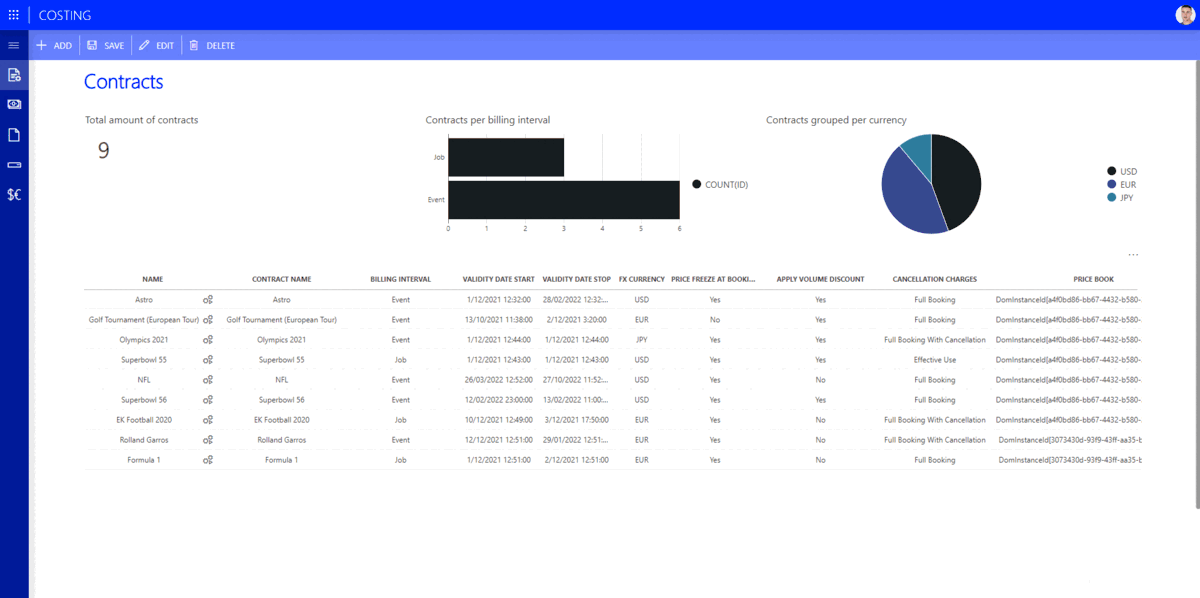
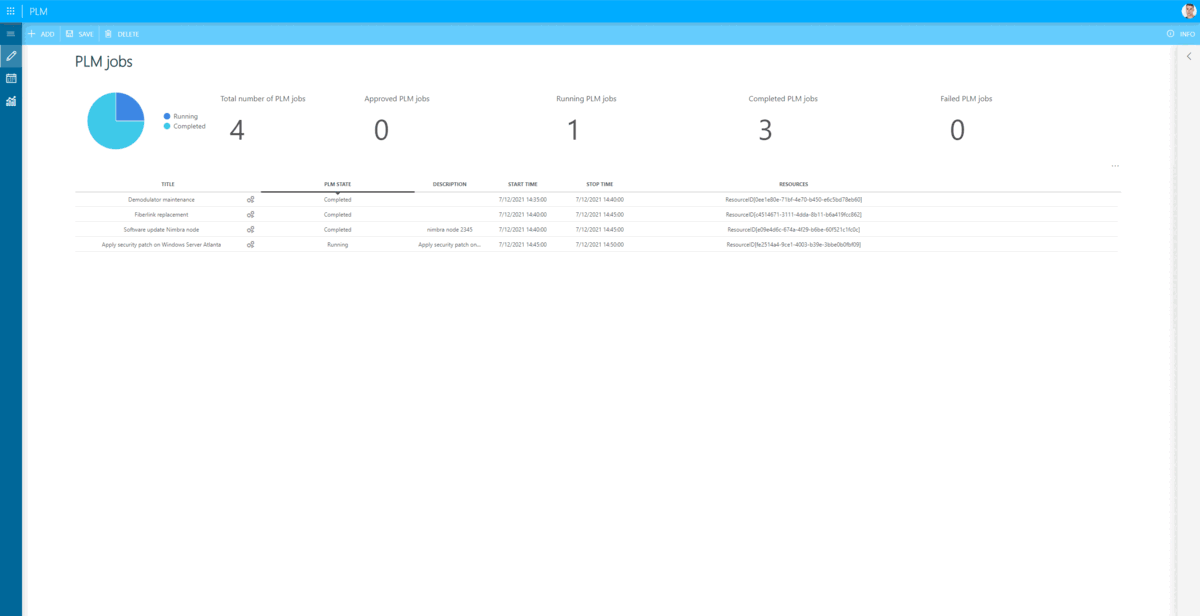
DataMiner Process Automation
Based on industry-standard Business Process Model and Notation (BPMN by www.omg.org), the DataMiner Process Automation (PA) module is the execution engine behind all activities in processes. These activities include user tasks, scripted tasks and also resource-aware tasks. The latter is unique since the system will automatically plan and allocate human and technical resources with the objective of guaranteeing timely execution of the process instances.

- Single engine for business, operational and technical processes, all in one – which is absolutely unique.
- Supports BPMN none start, timer start, intermediate timer and end events.
- Supports user tasks, script tasks (standard DataMiner Automation script execution) and resource tasks.
- Supports inclusive and exclusive OR gateways, as well as parallel gateways.
- Process activity utilization monitoring and tracing.
- Scheduled process activation and deactivation.
- Fully integrated with DataMiner DOM models.
- Fully integrated with DataMiner Service and Resource Management (SRM). Process activities can easily create DataMiner bookings and manage the entire media and broadband service life cycle orchestration (LSO).
- API to any third-party BPM system. DataMiner processes can receive triggers from third-party systems or send triggers to them. In other words, DataMiner PA is designed to integrate with APIs of your already deployed process automation systems (e.g. Camunda, ServiceNow, Salesforce, Pega, PowerApps, etc.).
The DataMiner Digital Transformation suite is designed to meet your DevOps requirements optimally. Creating new data models is done easily – also over API – whereas processes can be developed easily using activities that run your DataMiner scripts as well as your existing playbooks (Terraform, AWS Cloudformation, Ansible, etc.). As always, tailored connectors for each third-party system can be deployed on the DataMiner platform.
The time when business, operational and technical processes stood on their own is past
Technology is embedded in everything we do. Technology platforms create new business opportunities, and also pose challenges to operations. It no longer makes sense to keep the deployment, monitoring and orchestration of infrastructure isolated from each other. Digital transformation is about setting up processes across business teams, operations and ICT media and broadband technical teams.
DataMiner Service and Resource Management
DataMiner Service and Resource Management (SRM) takes care of the entire life cycle of resources and services (LSO). As services dynamically change all the time, so does the need to allocate existing resources or deploy new ones on demand. SRM automates the most sophisticated workloads with full awareness of schedules, availability, capabilities, and capacity of resources. In other words, DataMiner SRM optimizes the utilization of the on-premises hardware and ICT infrastructure, and it deploys platforms and SaaS services only when needed. That’s easy, cost-effective and green.
DataMiner SRM is integrated into the Digital Transformation Suite. Any process can create bookings and reservations on resources and services, set configurations and profiles, and manage the service life cycle. A typical use case is DataMiner publishing a multi-tenant portal that allows customers to create jobs and bookings on the service provider platform.

Read all about SRM in our free Product Sheet
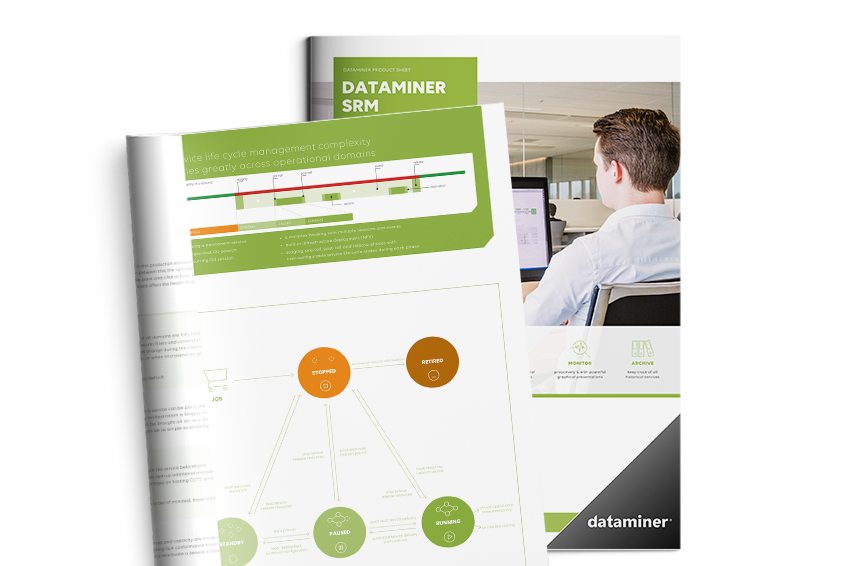
First-rate from the first time
Delivering first-rate services from the very first time, keeping operational expenses down,
maximizing utilization of system network resources and bolstering your organization to turn
new business ideas into services as quickly as possible, etc. All this is perfectly achievable
with the DataMiner Service & Resource Manager (SRM) suite. Its far-reaching automation
and powerful service orchestration will ensure that you can unlock every single business
opportunity coming your way.
Learn more about SRM with our introduction webinar
Please note that you need to be logged in to access our video library: in the top corner of the screen, click LOG IN and authenticate yourself with your corporate email address.
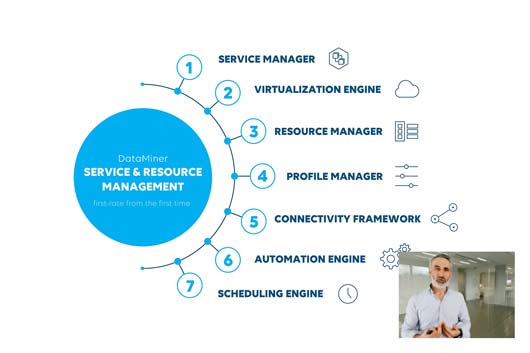
Introduction to DataMiner SRM
YOU'LL LEARN
- how to run an intent-driven operation
- how to implement powerful end-to-end automation
- how to deliver complex services as if they are a commodity
DataMiner Infrastructure Discovery and Provisioning
For the management of the ICT media and broadband hardware and software systems, DataMiner Infrastructure Discovery and Provisioning (IDP) comes into play, with full automation of inventory, discovery, connectivity discovery, synchronization with CMDBs, configuration backup and restoring, software version management and automated image uploads, facility planning and management, and much more. Those IDP activities are easy to include in your overall processes.
Download our Product Sheet
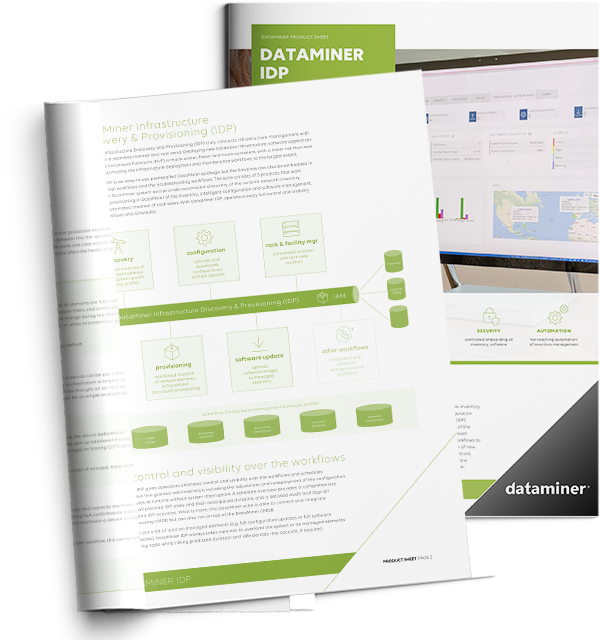
Zero-touch infrastructure deployment
Automatically deploy new hardware infrastructure, software appliances and Network Virtualized Functions (NVF) more quickly, easily and consistently than ever before.
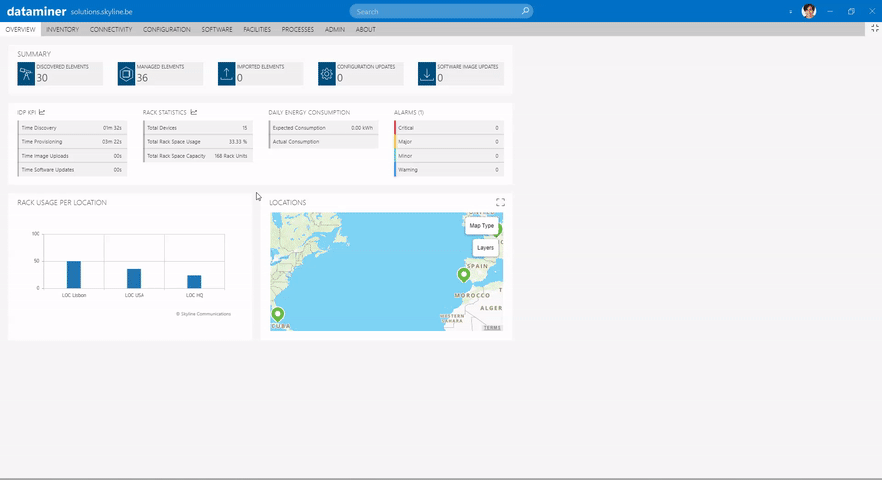
Data-driven operation: a must for the digital enterprise
Digital businesses are data-driven. Data is the source to any decision-making, be it business decisions, technology choices or supplier selections.
The foundation of DataMiner is its powerful and versatile data acquisition and control layer. With DataMiner, there are no restrictions to what data users can access. Data sources may reside on premises, in the cloud, or in a hybrid setup. Using any protocol and API (industry-standard and proprietary), the platform collects data (RESTful APIs, SNMP, PowerShell, etc.), receives streaming data sources (from Kafka, NATS, RabbitMQ, OpenConfig, sFlow, etc.), captures logs, and much more. A unique catalog of 7000+ connectors is available out of the box. In case your DataMiner System is cloud-connected, those connectors can be accessed and deployed on your on-premises DataMiner Systems in seconds – literally (https://catalog.dataminer.services).

All data is stored in DataMiner’s unified data lake, deployed on a highly scalable cluster of Cassandra and Elasticsearch nodes. Consequently, DataMiner creates a full digital twin of your operations. This is the foundation for any user and system to consume that data for visualization and analytics, but also to drive the automation activities in a digital enterprise: a unified and full digital twin is essential to align decision-making and collaboration across teams and tenants.
Collaboration across teams, suppliers, and customers creates endless possibilities
A digital organization does not stand on its own. Teams in the organization have to work together seamlessly: ICT, media, broadband, procurement, finance, etc. But the bigger transformation originates from digitizing the entire supply chain. The latter requires that systems are connected, and the technology of choice is the cloud.
Your DataMiner System can become cloud-connected with just a few clicks in DataMiner System Center. From that moment on, your DataMiner platform gets a host of additional capabilities. Some examples are listed below.
DataMiner leverages your collaboration tool of choice (ChatOps). DataMiner is integrated with Microsoft® Teams and participates actively in chat sessions, feeding participants in your enterprise, and across enterprises, with a rich set of information relevant to the chat (contextual info). All kinds of information from your DataMiner Systems can be shared: administrative data from DataMiner Object Models, location and inventory data, service statistics and SLAs, real-time and historical metrics, visual maps, alarms, etc.
In addition to the ChatOps, more features will become available, including automated creation of Teams and Channels upon an incident or following the schedule of an occasional-use session (e.g. sports event), and much more.
Sharing data in real time and in a secured manner is a single-click operation in DataMiner Dashboards. Building upon the power of the digital twin of your operation and the DataMiner Generic Query Interface (GQI), users across the value chain can instantly access relevant data such as customer information, contracts, SLAs, order quantities and numbers, inventory levels, supplier SLA performance, and even real-time counters and metrics from the network. DataMiner comes with highly personalized experiences when it comes to dashboards and custom applications tailored to the user’s persona. DataMiner Dashboards can literally access, aggregate and visualize any data set imaginable, conveniently tailored to the needs of the user. Moreover, many tenants in the supply chain can access dashboards in real time and within a few clicks. DataMiner Dashboard Sharing runs on the DataMiner Cloud Platform, and it is securely and easily accessible for anyone in the organization and supply chain.

The upcoming DataMiner Custom Applications are lightweight apps that offer users the data and controls they need, tailored to their activities. Custom applications can be created, deployed and operated in any web browser on the fly (DevOps), are easily accessible, and are personalized to the user. Multi-tenant operations become a piece of cake.
Systems in the digital age interact using a rich set of APIs deployed on premises or in the cloud. APIs are the glue of the supply chain, automation and data exchange. DataMiner comes with a rich set of out-of-the-box, open and well-documented APIs. But as system integration use cases rise in complexity, DataMiner will also soon come with the ability to dynamically deploy new APIs tailored to the use case. Using webhooks, DevOps engineers can tailor the API in a convenient, DevOps-style way, and publish it in a secure manner with just a few clicks in DataMiner. The webhooks can be published to exchange configuration data, inventory data, alarms, and any other data set imaginable. In addition, webhooks can initiate actions (automation scripts in DataMiner) with just a few clicks. So now, over API, users can trigger the most complex automation and processes in a convenient manner. And evidently, DataMiner not only publishes webhooks, but also acts as a consumer.
Augmented Operation powered by AI
Digital enterprises run on a flood of data. Acquiring data is tables stakes – and DataMiner excels in this domain (digital twin). But how can enterprises ensure that no relevant data is left unexplored? And how can they create an environment where users are not overloaded with irrelevant data and therefore miss out on the important data points?
Artificial Intelligence is the toolbox at hand. Out of the box, DataMiner Augmented Operation will assists teams in making the right choices, with intelligent KPI forecasting, change point detection, anomaly detection, trend change detection, data behavioral tagging, proactive alarming, focus alarms, and much more. All of this requires no configuration and runs unsupervised. And we’re adding more tools to the box continuously.
Becoming a software-savvy digital enterprise
Digital transformation is the result of successfully bundling people, governance, and processes. The DataMiner platform enables all this. It is built to support larger, often corporate-led transformations. But in the same breath, the platform’s embedded DevOps features and CI/CD pipeline also encourage people-led initiatives.
The DataMiner Dojo Community is the home of DataMiner users, technology partners, systems integrators, and Skyline engineers. It’s a vibrant platform, open to anyone to learn, share and prepare for certification. There is a huge set of resources available: blogs, use cases, solution descriptions, user manuals, APIs, and much more.
Dojo makes it easy for enterprises to hire new software talent and have them trained to become the digital transformation DevOps team. Investing in your own talent gives you the freedom to set your own goals, priorities, and timelines optimally. That kind of agility is essential to your digital journey. Of course, the Skyline deploy squads assist enterprises as needed during peak loads … also in an agile way.
Let's talk about your project
Are you interested to know if this standard solution also offers possibilities for your project? You can either ask your question right here on our Dojo community. Or, if you prefer the more personal touch, you can also contact your local sales representative. Either way, our DataMiner experts will be happy to discuss all the possibilities with you, down to the smallest detail.